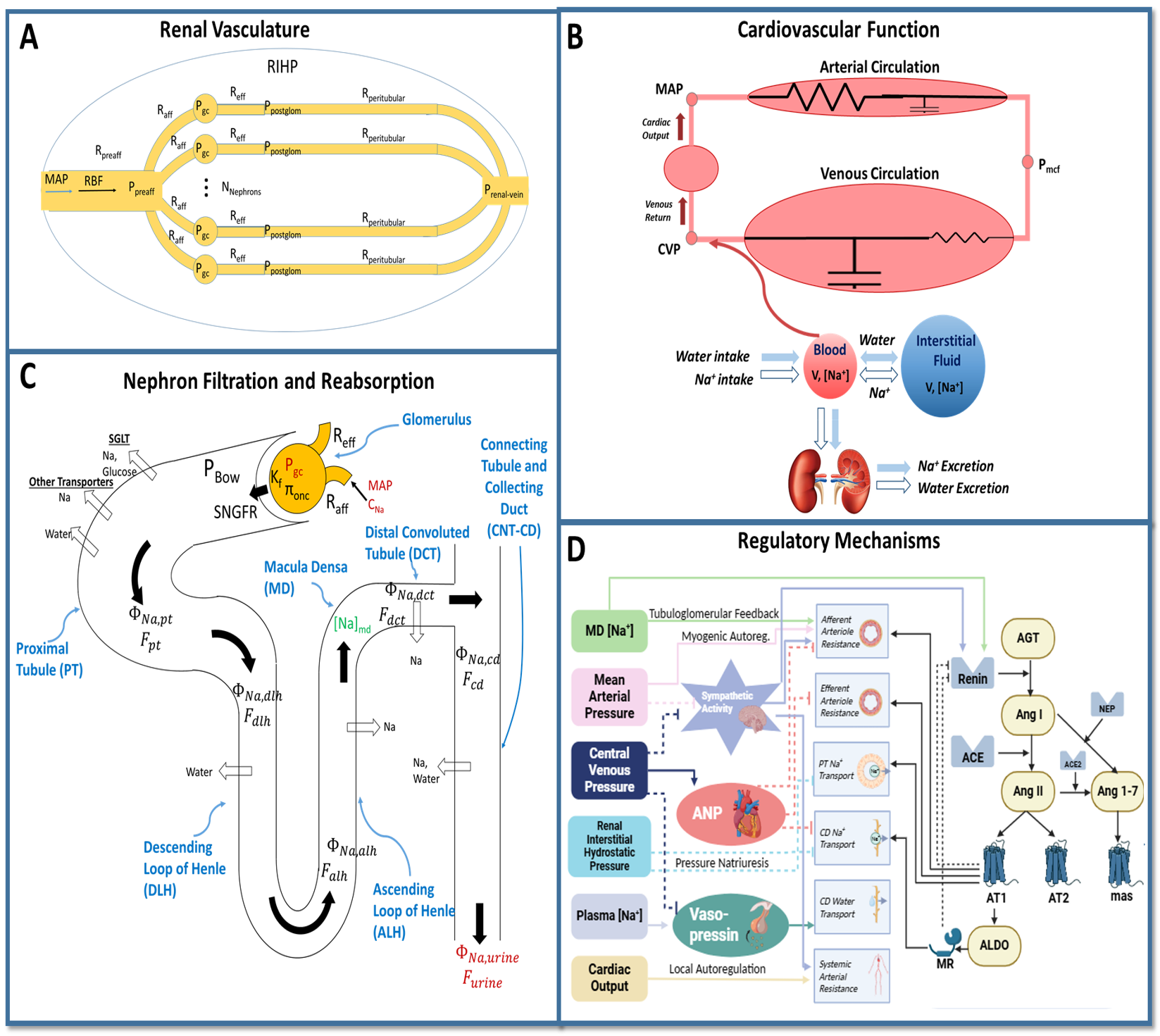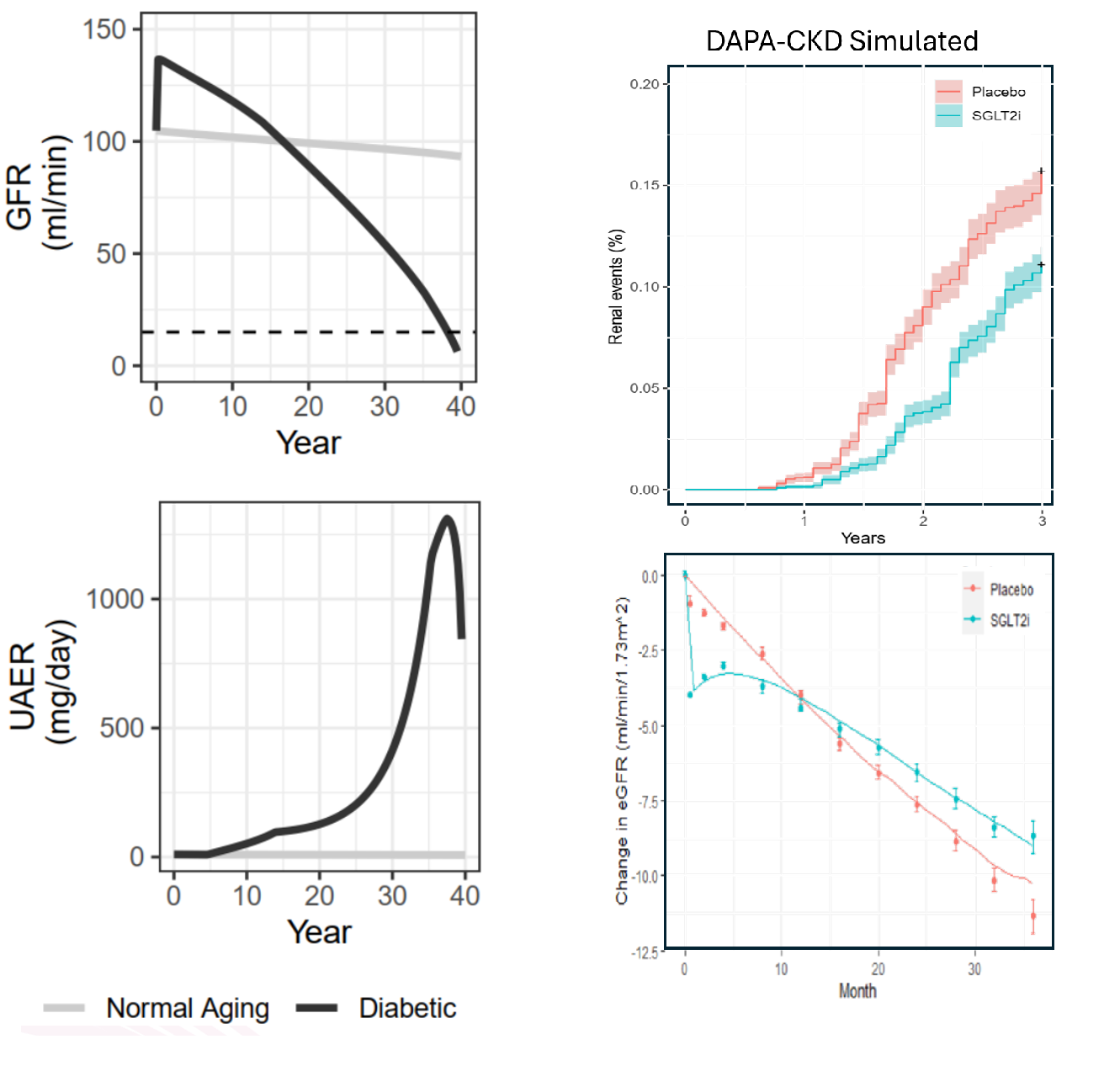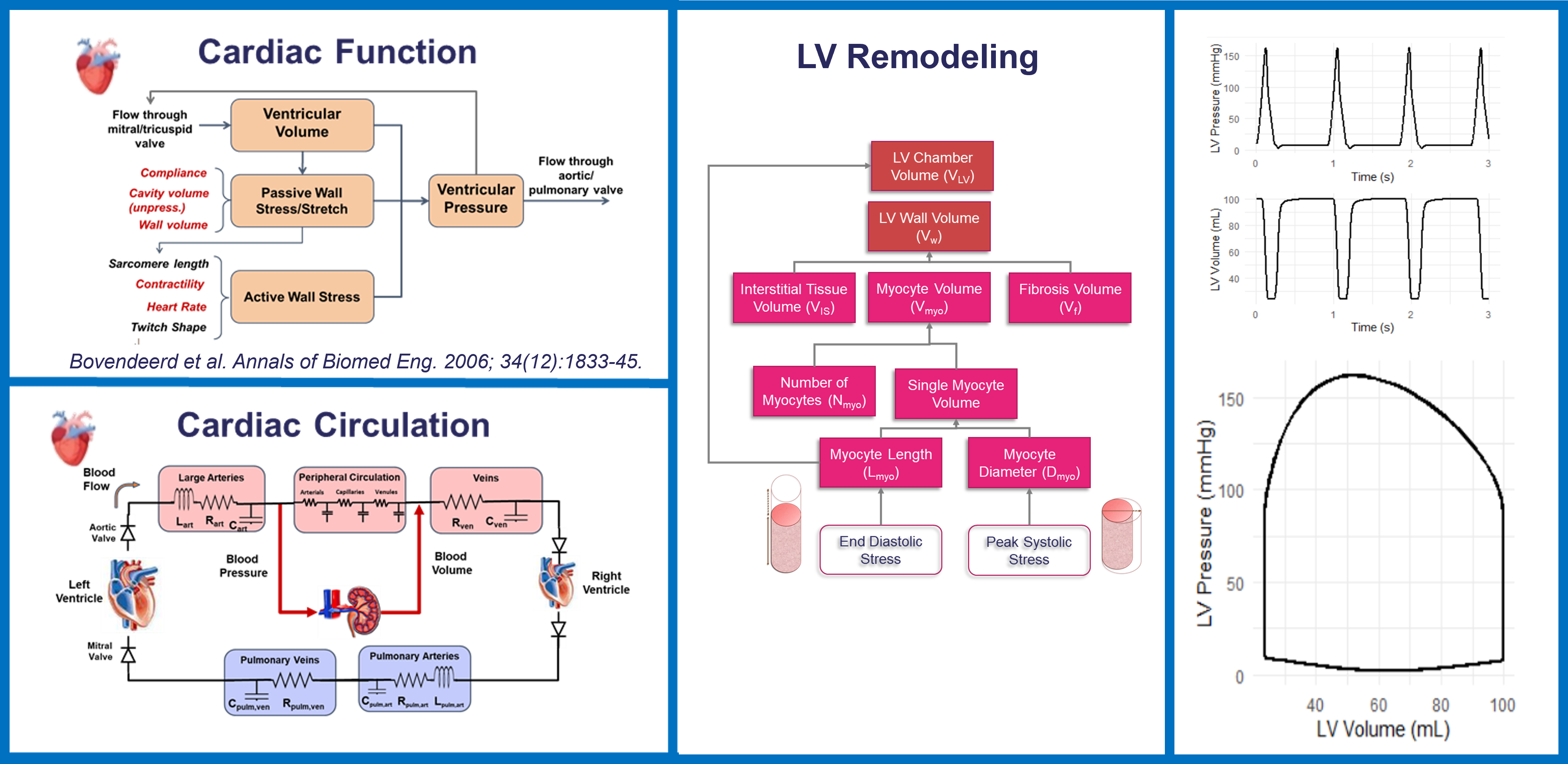
Peer-Reviewed Cardiorenal Models for Pharmaceutical R&D
Our models are built on a strong scientific foundation and reflect over 16 years of focused development in kidney and cardiovascular systems modeling.
Developed, peer-reviewed, and published by the Cardiorenal Systems Physiology Lab at the University of Georgia College of Engineering, these models offer unmatched depth and rigor. While many companies use them, we bring unique, first-hand expertise in their development. Our models have been extensively validated through peer-review and published in leading scientific journals. We are now developing tools and resources to make these published models more accessible and user-friendly (coming soon).
Kidney and Fluid Homeostasis Multi-scale Model
Our core, peer-reviewed model provides a comprehensive framework for understanding kidney function and its systemic effects.
This model has been extensively published and peer-reviewed in leading scientific journals. Key Publications

Model Extensions
Chronic Kidney Disease Model
Simulates CKD progression by simulating kidney injury processes (glomerulosclerosis, tubular atrophy and fibrosis, interstitial fibrosis, podocyte injury, etc.), nephron loss, proteinuria and GFR decline over time.
This model has been extensively published and peer-reviewed in leading scientific journals. Key Publications

Cardiac-Kidney Model
Integrates cardiac function with kidney physiology to simulate heart failure and cardiorenal syndromes.
This model has been extensively published and peer-reviewed in leading scientific journals. Key Publications

Other Extensions
Additional specialized modeling capabilities that extend our core platform:
1) Potassium-Aldosterone-Sodium Homeostasis Model
Allows simulation of standard-of-care and novel therapeutics effects on serum potassium and hyperkalemia.
2) Proximal Tubule Bioenergetics
Models energy metabolism and transport processes in proximal tubule cells.
3) Drug-Induced Kidney Injury
Simulates mechanisms and progression of nephrotoxicity and relevant biomarkers including serum creatinine, Kim-1, and alpha-GST.
4) Biophysics of Glomerular Flow
Models fluid dynamics and filtration mechanics at the glomerular level.
Our Core Capabilities
Mechanistic Modeling
Deep physiological understanding through mathematical modeling of kidney-cardiovascular interactions
Simulation & Analysis
Predictive simulations to understand drug effects and optimize development strategies
Strategic Insights
Data-driven recommendations to guide critical development decisions